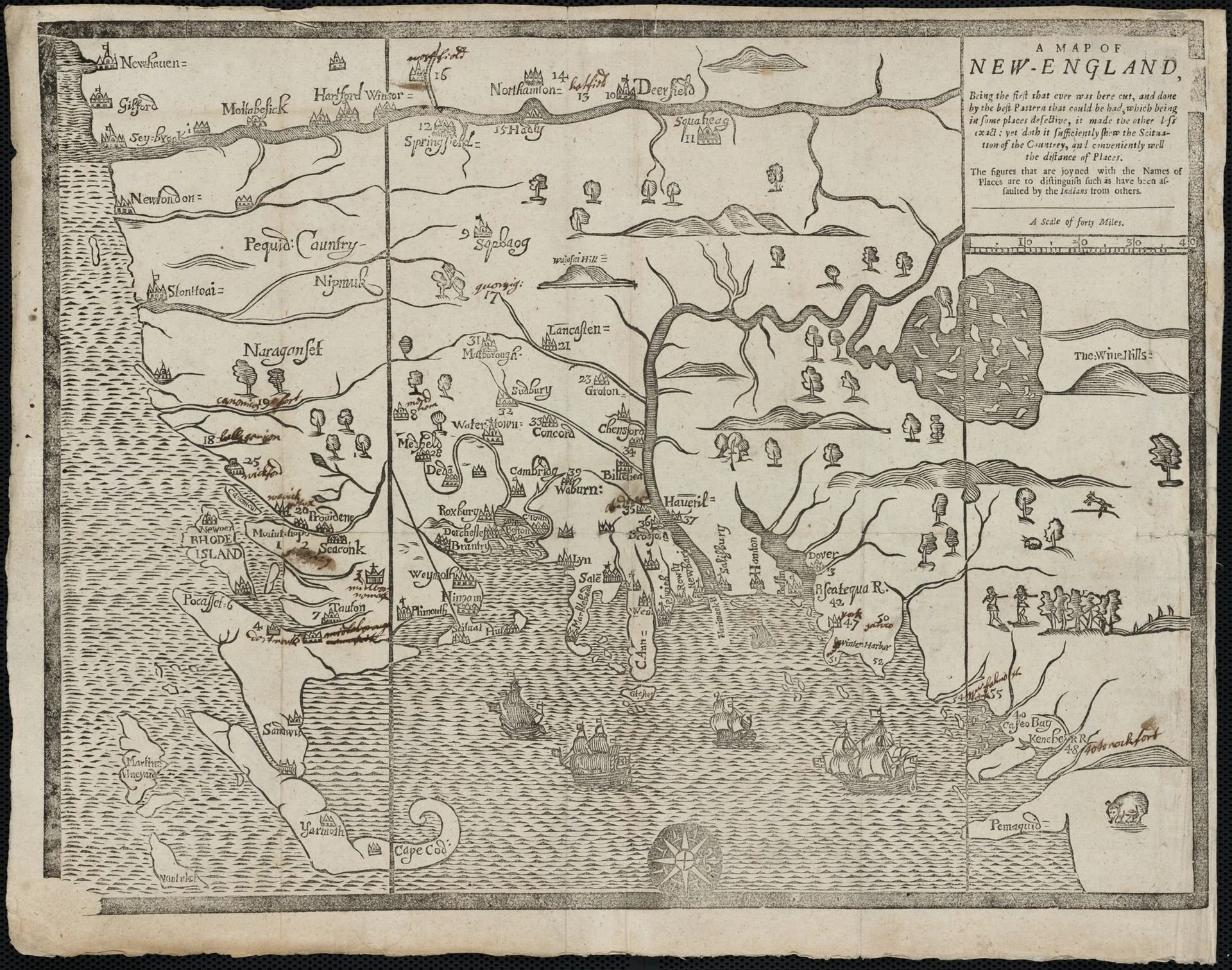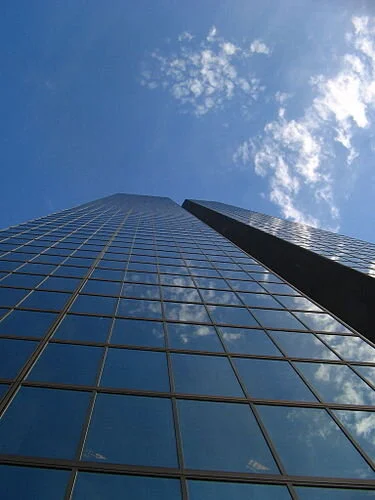
Well-papered Edwardian Boston
Boston’s “Newspaper Row’’ in 1910, when the city had seven daily papers.
The gift and trauma of tech
“Collaboration” (mixed media on paper), by Joe Taveras (Robojoebot), roboticist and artist, in his show “American Futurism,’’ at his Robojoebot Studio, in Boston’s SOWA arts district.
Artscope quotes him as saying that "I am inspired by everything I come into contact with as well as the predictions of future technologies that arise within my mind." The magazine continues: “Much of his artwork in American Futurism consists of fragmented figures made with dark lines, representing the global atmosphere of uncertainty and the detrimental effects of innovation without ethics. However, the brightness and colors present speak to positivity and the idea that the future can be better than the present.’’
Chants in Copley Square
Copley Square fountain, with the Old South Church’s tower in distance, in a recent, pre-pandemic summer.
— Photo by Caroline Culler
“There’s a poem in Boston’s Copley Square
where protest chants
tear through the air
like sheets of rain,
where love of the many
swallows hatred of the few.’’
— From “In This Place (An American Lyric)’’, by Amanda Gorman
Trying to rebuild trust in public transport
On an MBTA Red Line platform at Boston’s Downtown Crossing station
From The New England Council (newenglandcouncil.com):
“Keolis was highlighted in Intelligent Transport for its role in providing and operating public transport in 15 countries worldwide in the age of a pandemic.
“In New England, Keolis operates the MBTA’s Commuter Rail system, which serves eastern Massachusetts and parts of Rhode Island. In the interview, CEO Bernard Tabary discusses the effects of the pandemic on transport and what Keolis is doing to rebuild public trust in transport solutions and the future of transportation worldwide.’’
The lack of ornamentation, or other breaks along the surface, on Boston’s 200 Clarendon Street (aka Hancock Tower) skyscraper here, the city’s tallest, is said to worsen the local wind-tunnel effect.
From Robert Whitcomb’s “Digital Diary,’’ in GoLocal24.com
What a nice feeling it is after a windy cold morning to feel the sun on your face after the wind drops off.
Boston is the windiest major city in the United States, partly because it’s on a stretch of ocean frequented by intense storms. The blasts sure hit you in the wind-tunnel effect in the mix of skyscrapers and much older buildings downtown, and in the growing but perhaps eventually imperiled-by-sea-level-rise Seaport District. Very off-putting. The wind-tunnel effect is serious enough that building codes and designs may have to be adjusted in downtown Boston. Architects and city planners are working on the problem. I love many skyscrapers but…




